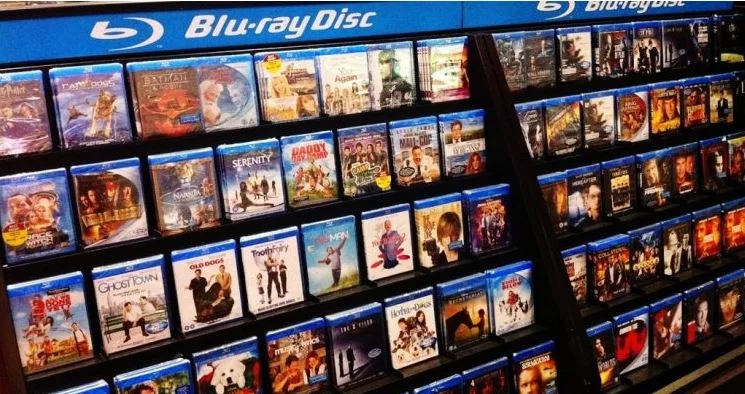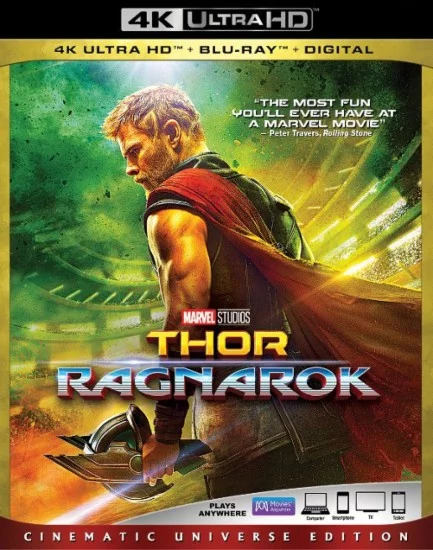
As the world moves increasingly digital, it’s hard to get excited about buying a physical disc and figuring out storage for any but your very favorite movies. Streaming can also be crystal clear, in full HD or even 4K, and it’s just about always cheaper than a physical product. Better yet, a streaming solution through iTunes or similar is faster and more convenient too, less than 60 seconds between deciding you really want to go and rewatch a classic like ‘Captain America: The Winter Soldier’ and having the opening scene burst onto your television.
Studios are aware of this dilemma and for years have been trying to get us to stick with that comfortable habit of buying physical, not digital. Loved the movie? Buy a copy to keep forever. To be fair, in some situations it makes a lot of sense because buying a DVD, Blu-Ray or 4K Ultra HD copy of a movie – or TV series – means you do own it and can watch it as many times as you’d like, anywhere you’d like. Even when there’s no Internet connection.
Which brings us to the world of 4K Ultra HD. I’ve had a full 4K setup for over a year and while I have hundreds of DVDs and about 100 Blu-Ray discs, I have less than a dozen 4K Ultra HD disks, even for favorite movies. The studios spend tens of millions making the visual components of modern films gorgeous. Why wouldn’t you want the best resolution playback possible? Turns out that tech is its own worst enemy in this regard: With superfast TV CPU chips and graphics processors, my Vizio 4K TV and Samsung 4K player can upsample and show a gorgeous, crystal clear movie even when it’s “just” in Blu-Ray (e.g., 1080p) resolution. Yes, 4K looks better, but it’s not a dramatic jump like you get from standard definition to full HD.
 The 4K Ultra HD release of ‘Thor: Ragnarok’ highlights the dilemma for the studio. The 4K version of the movie is on one disc, offering a high dynamic range (HDR) and a wider color spectrum, along with Dolby Atmos audio. It looks great, no question. In the same package is a Blu-Ray copy of the film too and a certificate for a digital copy you can stream or download. You can decide how to watch it, or even share discs with friends or family. Except there’s a great irony in the fact that all the bonus extras are tucked onto the Blu-Ray disc, not the 4K disc.
The 4K Ultra HD release of ‘Thor: Ragnarok’ highlights the dilemma for the studio. The 4K version of the movie is on one disc, offering a high dynamic range (HDR) and a wider color spectrum, along with Dolby Atmos audio. It looks great, no question. In the same package is a Blu-Ray copy of the film too and a certificate for a digital copy you can stream or download. You can decide how to watch it, or even share discs with friends or family. Except there’s a great irony in the fact that all the bonus extras are tucked onto the Blu-Ray disc, not the 4K disc.
I’ve always looked at the bonus features and footage as the studio’s differentiator that’s supposed to make you want to buy the physical disc: Content you can’t get when you buy or rent the stream from iTunes, Xfinity or similar. With ‘Thor: Ragnarok,’ however, turns out that just about all of the extras are also available on YouTube (though I’ll guess that some of it is unauthorized).
Let’s assume that it still makes sense to acquire the physical package. Are they any good? To find out, I sat down and watched the 4K version of ‘Thor: Ragnarok,’ then went through every single one of the many extras on the disc.
The result is that it’s definitely a mixed bag. It was interesting to learn that Hemsworth has a dialect coach to help him sound less Australian and how the desire to have a more fun and silly film (obviously highly influenced by the box office success of ‘Guardians of the Galaxy’ and ‘Deadpool,’ though neither are ever mentioned by name) came through during the production. Seeing behind the scenes also highlighted how much motion capture is an essential part of a film like ‘Thor: Ragnarok,’ with actors wearing weird grey and black suits, having reflective dots glued to their faces and big poles on their backs for a “focus point” for other actors to “look into the eyes” of the final rendered character.
There was very little about the visual effects or staging of the various stunts, however, the extras were much more focused on the actors and the director. And predictably, some of the extras were just plain dumb, notably the “exclusive” Darryl short that I’m sure sounded hilarious as a concept — Grandmaster (Jeff Goldblum) shares an apartment with typical slow-witted nerd Darryl — but was skip-to-the-next-extra bad on the screen.
Interestingly, there were a number of deleted and extended scenes and with only one exception, they were all well deleted from the film and would have added nothing and instead slowed down the narrative. You always hope for a hidden gem that serves as a smart bridge between two key scenes. That’s not what we get in this set of scenes, however.
All is forgiven, though, when you get to the two hilarious and weirdly compelling 8-bit renders of key scenes from the film. Ostensibly created to “work out the scene and its effects” they’re fun and ingenious in a way that is missing from the rest of the extras. Heck, my viewing group and I all agreed that we want a game based on the simplistic 80s throwback graphics, they’re that good.
There’s also a director’s commentary track, which offers up much value if you want to watch the entire movie while listening to director Taika Waititi talk about the challenges of assembling a film with hundreds of visual effects, shooting locations throughout the world and dozens of actors and a crew of hundreds.
All told, most of the extras seem like filler, and it’s a dedicated fan who sits through everything to find the few gems. Still, if you are that dedicated a fan and can overlook the lack of any “how we did it” footage, there are some bonus extras worth the time, along with the director’s commentary.
But is it worth the physical product versus a simple digital download or stream? The 4K edition will set you back almost $30 too, and even if you have a full 4K setup, if it’s not a really big screen, you might be surprised how little difference there is versus the Blu-Ray package. So if you’ve already transitioned into the digital age and have a reliable network connection, probably not.
(Disclosure: Marvel Studios sent us the 4K Ultra HD Cinematic Universe Edition of ‘Thor: Ragnarok’ for review purposes.)
